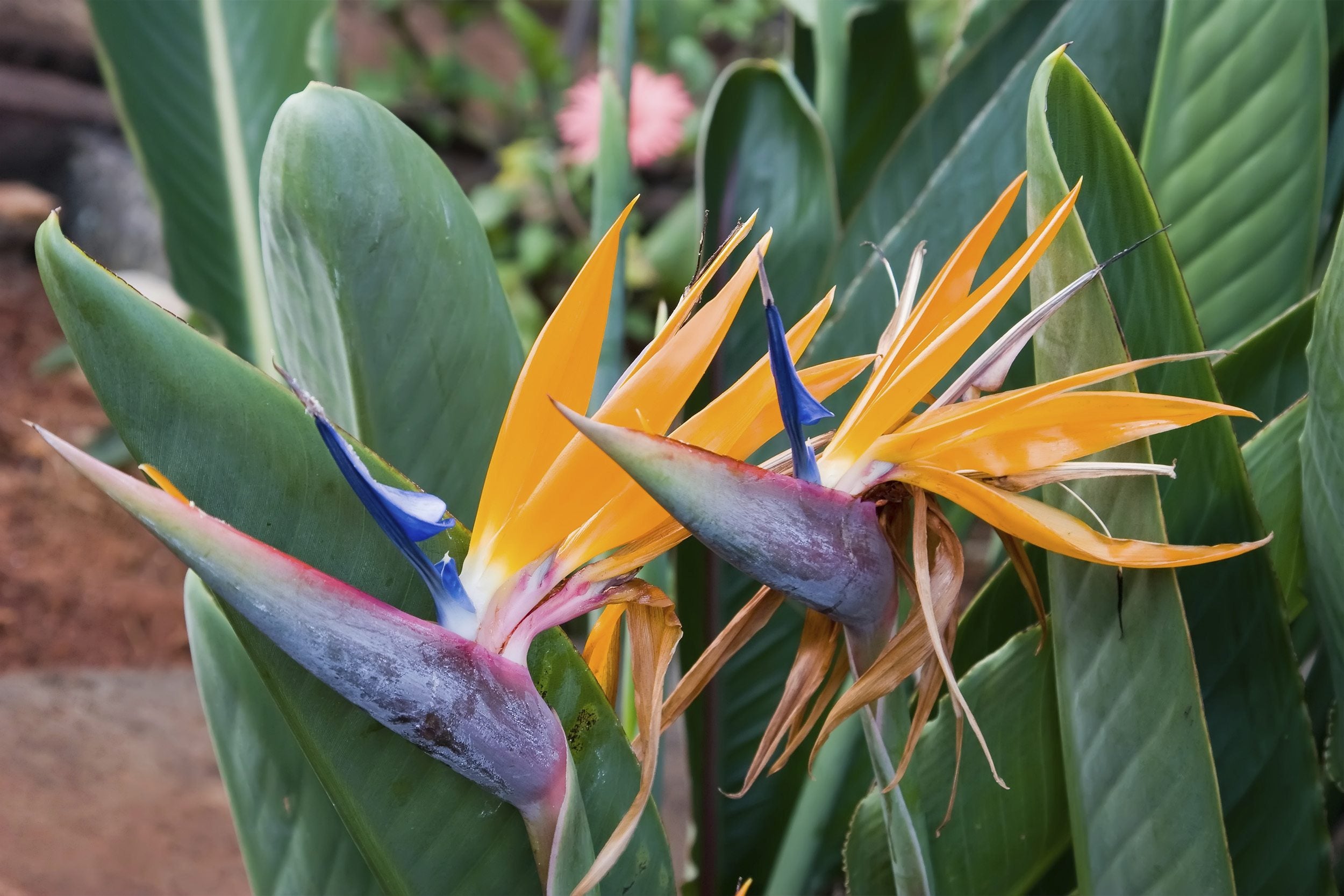Bird Of Paradise Growing Conditions: Caring For Outdoor Bird Of Paradise Plants


Some say the blossoms of the bird of paradise plant resemble the heads of tropical birds, but others say they look like brightly colored birds in full flight. Regardless, ideal bird of paradise growing conditions both indoors and out remain the same: bright light, well-drained soil, and adequate water through the growing season. Read on to learn how to take care of birds of paradise in the garden.
How to Take Care of Birds of Paradise Outside
Bird of paradise is a clump-forming, evergreen plant. A mature clump can be 5 feet (1.5 m.) tall and wide. The waxy, gray-green leaves get some 18 inches (45.5 cm.) long and resemble banana leaves.
Gardeners are particularly interested in the brilliantly hued flowers, each with three bright orange bracts and three indigo petals. It is these blossoms that give the plant its common name. If you are looking for numerous flowers and shorter stems on your bird of paradise plants, try growing bird of paradise outside in full sun.
Those grown in shade have bigger blossoms but taller stalks. The plant produces flowers all year long in tropical climates. Most flowers grow on outer sections of the clumps. Organize your planting to allow sufficient flowering room by spacing your outdoor bird of paradise plants about 6 feet (2 m.) apart.
The best bird of paradise growing conditions include fertile soil rich in organic content that drains well. Outdoor bird of paradise plants need sufficient water to keep their soil moist all summer long, but less in the winter months.
Bird of Paradise Growing Zone
Growing bird of paradise outside is only possible if you live in USDA zones 9 through 12. The plant makes an attractive addition to the backyard garden in these zones and can be used as the focal point in a floral planting. In colder zones, the plant may survive but developing flower buds may be damaged.
In these growing zones, you can propagate outdoor bird of paradise plants by division. When the clump has five or more stalks, dig it up in the spring and separate the root into one-stalk sections. Each should be replanted at the same depth as the original clump.
Sign up for the Gardening Know How newsletter today and receive a free copy of our e-book "How to Grow Delicious Tomatoes".

Teo Spengler is a master gardener and a docent at the San Francisco Botanical Garden, where she hosts public tours. She has studied horticulture and written about nature, trees, plants, and gardening for more than two decades, following a career as an attorney and legal writer. Her extended family includes some 30 houseplants and hundreds of outdoor plants, including 250 trees, which are her main passion. Spengler currently splits her life between San Francisco and the French Basque Country, though she was raised in Alaska, giving her experience of gardening in a range of climates.